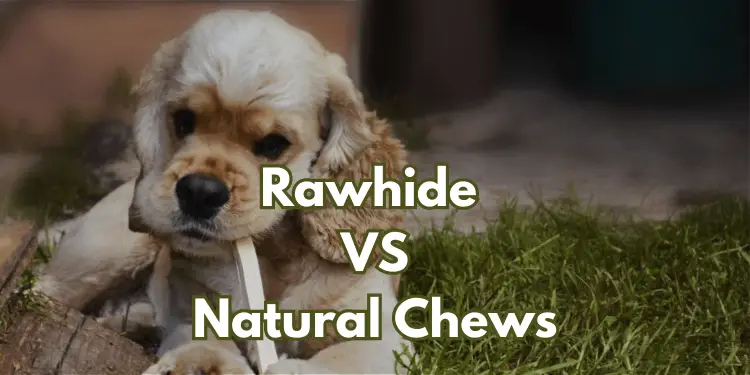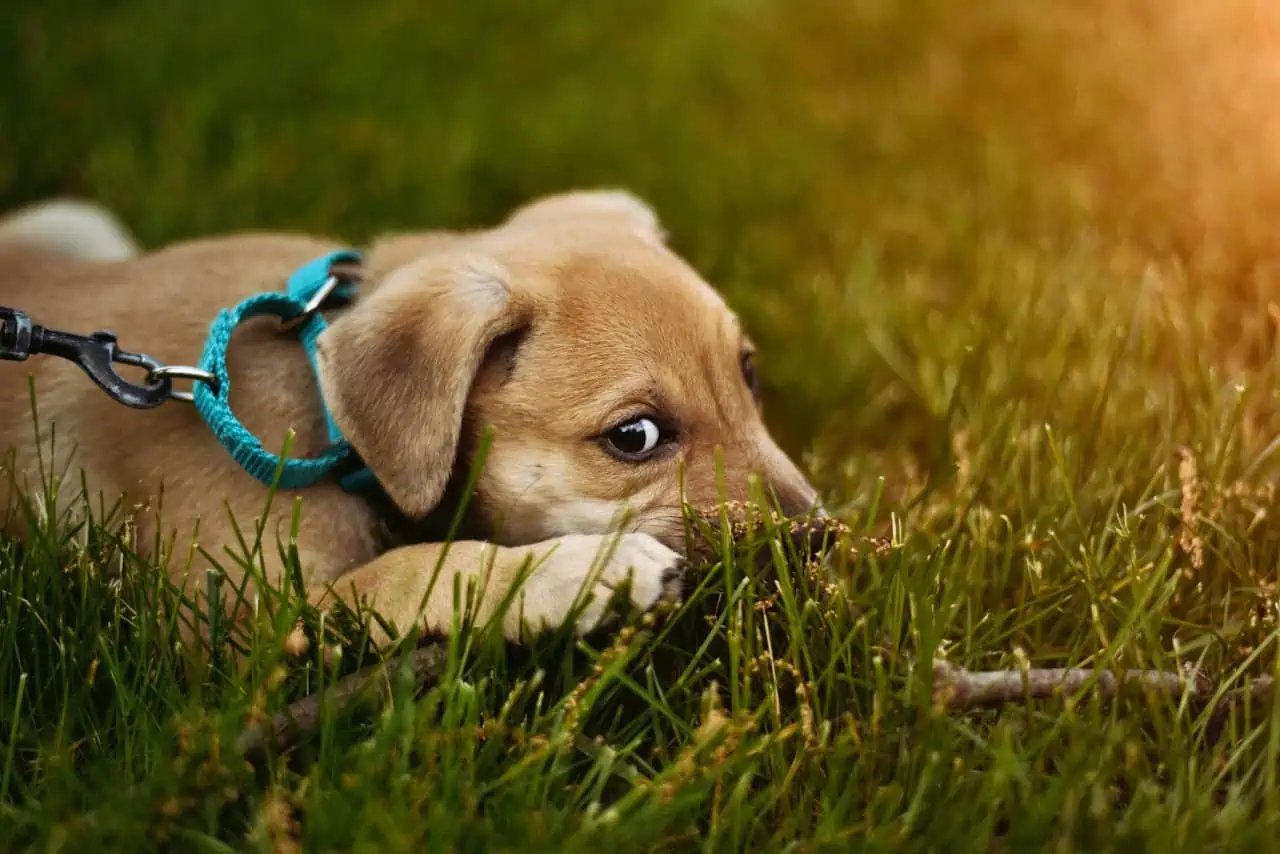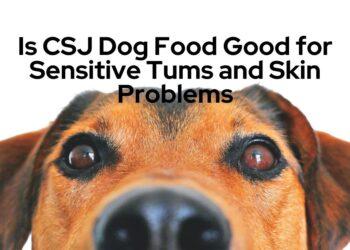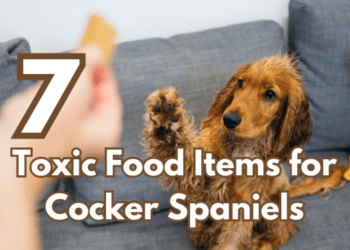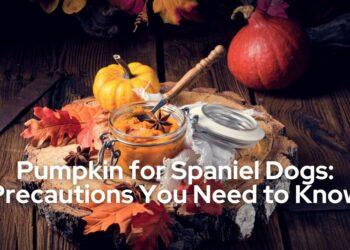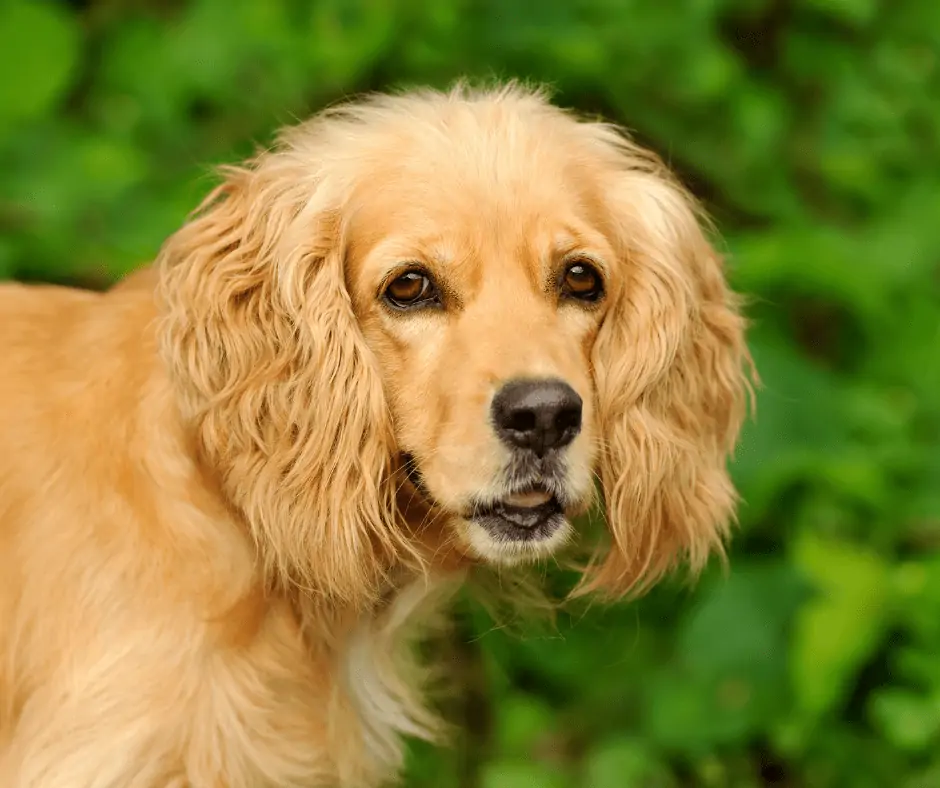Alright, fellow pup enthusiasts, it’s time to settle the score between two popular chew options: rawhide and natural chews, all for our beloved Cocker Spaniels. When it comes to satisfying those canine cravings, which route should you take? Let’s dive in and fetch the facts to find out which chew reigns supreme for our furry friends.
Table of Contents
What are rawhide chews?
Alright, so these Rawhide Chews? They’re like protein-packed goodness straight from bovine hides. These treats are like the canine version of a marathon – designed for the strong-jawed pups or those that just can’t sit still. And guess what? These chews are all about putting those animal hides to good use, like the skin from cows, bulls, buffaloes, and the like. Instead of tossing them aside, they’re used to whip up stuff like clothing, shoes, and accessories.
Here’s how it rolls: the outer layer gets turned into leather, while the inside gets a special treatment. Think cooking, defatting, and grinding – all to transform it into those chewable rawhide treats and bits for animal grub. These goodies are loaded with amino acids, minerals, and Vitamin B. And sometimes, they even toss in bones for a little extra phosphorus and protein boost. To make things extra tasty, they get a chicken, beef, or liver flavor upgrade as part of the whole chewstick vibe. Plus, you’ve got quality checks left and right to make sure everything’s tip-top before these treats hit the shelves.
Top Perks of Rawhide Chews:
- Teething dogs won’t turn your furniture into kindling.
- Keep those pups engaged for way longer.
- Secretly scrub that tartar and plaque off their teeth.
- Offer a stress-busting outlet.
But, hold up! Despite all the good stuff, keep this in mind: these chews are pretty calorie-packed. A single treat’s about two by six inches and an eighth of an inch thick, weighing in at around 50-100 calories. Some chew makers even sneak in not-so-great artificial colors that could be a health hiccup.
Now, onto the not-so-sunny side of Rawhide chews:
- They take their sweet time digesting.
- Choking hazard alert if your pup swallows wonky.
- Could lead to some extra padding if overindulged.
- Salmonella risk is a real thing.
- Whole chunks might block up those intestines.
Also Read: Why Rawhide is Bad for your King Charles Spaniel Puppy
A word about natural chews
So, with those rawhide chew concerns in mind, plenty of vet experts are giving a thumbs up to natural chews as a nifty dog treat swap. These are like the healthier, gluten-free goodies for your pup that skip the whole coloring and additives deal. No hide in sight here – these chews are cooked up from things like pig’s ears or chicken feet, stuff that’s safe to munch on.
Here’s how it goes down: they grind up those natural ingredients, whip up a mix, and voila! Chewy treats are born. Bits and bobs from fish, lambs, rabbits, ducks, chickens, and turkeys go into these treats, keeping some of that good stuff intact even after all the drying and preserving action.
Benefits of natural chews:
- Totally safe and healthy treats
- They’ve got a gentle bite
- Super easy on the tummy
- No artificial colors and additives
Natural chews are like the perfect recipe to keep your pup engaged and entertained. Just
keep an eye out for any ingredient allergies or tummy troubles like itching, vomiting, or hair loss.
Rawhide Chews Vs Natural Chews for Cocker Spaniels
Here is a summary of the difference between rawhide and natural chews for dogs for simplicity
| Characteristic | Rawhide Chews | Natural Chews |
| Coloring | Added coloring | No added coloring |
| Additives | Preservatives and artificial flavorings used | No preservatives or artificial flavorings used |
| Health Benefits | Rich in vitamin B and proteins | Rich in antioxidants |
| Chief ingredient | Hide of cattle | The skin of cattle, poultry, and fish |
| Shapes | Cylindrical shaped | Flat or roundish depending on the animal part used |
| Safety | Can lead to choking or digestion hazards | Safe for use |
| Suitable for | Canines with strong teeth | Canines with a soft mouth |
| Calories | Rich in calories | Moderate calories |
| Puppies | They may or may not use it depending on their breed | You can easily use it |
| Older dogs | Unsuitable for older dogs that have lost their teeth or chewing capacity | Suitable for older dogs |
| Number of chews daily | Not more than one daily | It can be consumed a few times weekly |
Which is the better option?
When it comes to your cocker spaniels, think about swapping out those rawhide chews for something healthier. Natural chews, like the plant-based kind made from carrots, coconut, and broccoli, could be a great choice. Just make sure your pup isn’t allergic to any ingredients and won’t accidentally gulp down something too big. After all, you want them to snack happily, right?
End Thoughts
Whether you go for the traditional toughness of rawhide or the natural goodness of alternative chews, keeping your furry companion’s health, happiness, and safety in mind is what truly matters. So, weigh the pros and cons, consult with your veterinarian, and make the chew-tastic choice that’s right for your spirited Cocker Spaniel.
FAQs
Is 100% natural rawhide good for Cocker Spaniel?
While 100% natural rawhide can provide entertainment and teeth-cleaning benefits for Cocker Spaniels, it’s essential to be cautious. Rawhide can be a choking hazard, cause digestion issues, and may not be suitable for all dogs. Consult your vet and consider alternative chews for your pup’s safety and well-being.
How many rawhides can a Cocker Spaniel have in a week?
The number of rawhides a Cocker Spaniel can have in a week depends on various factors like size, age, and individual tolerance. Generally, it’s best to limit rawhide treats to a maximum of 1-2 per week due to potential digestion issues and choking hazards. Always consult your vet for personalized advice based on your dog’s health and needs.
If you are a dog lover then, Subscribe to our weekly newsletters. No Spams!
